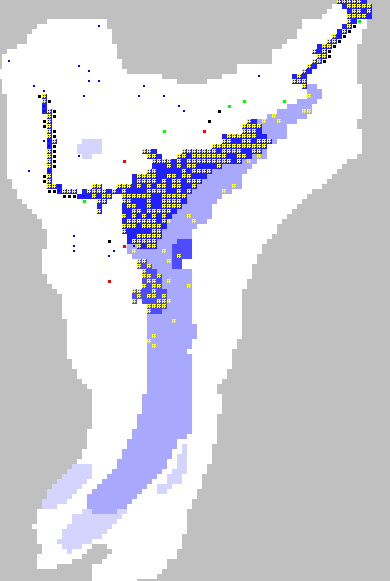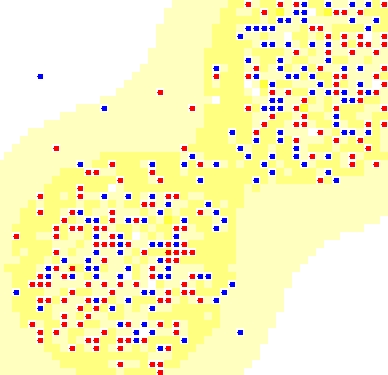

Sugarscape (Epstein & Axtel)
Today, let’s talk about artificial life. Specifically, one of the notable pioneering projects: Sugarscape.
Sugarscape is an agent-based social simulation. An agent is an individual entity that makes decisions. The simulation is the emergent result of a lot of little, simple decisions. Agent-based simulations are relatively common now. Dwarf Fortress is perhaps the most obviously famous example, but a lot of game AI uses agents.
Devised by Joshua M. Epstein and Robert Axtell, Sugarscape agents live in a grid. Some of the cells in the grid have sugar, which the agents eat. Each turn in the simulation, they move around and harvest sugar. Depending on the model being tested, they can also reproduce, deal with sugar depletion, inherit sources of sugar, negotiate with other agents, and so on.

The MASON Multiagent Simulation Toolkit and Ascape both include implementations of Sugarscape, if you wanted to play with it yourself. (That’s where I recorded the animations above.)
Agent-based models didn’t stop with Sugarscape, of course. In the social sciences, one of the famous applications of agent-based models is the Artificial Anasazi model, created to investigate what happened to the native inhabitants of Long House Valley in Arizona, who abandoned the valley around 1300 A.D. Ascape has an implementation of the simulation, which looks like this:

These days, researchers are using agent based models with millions of agents running on GPUs and superclusters.
